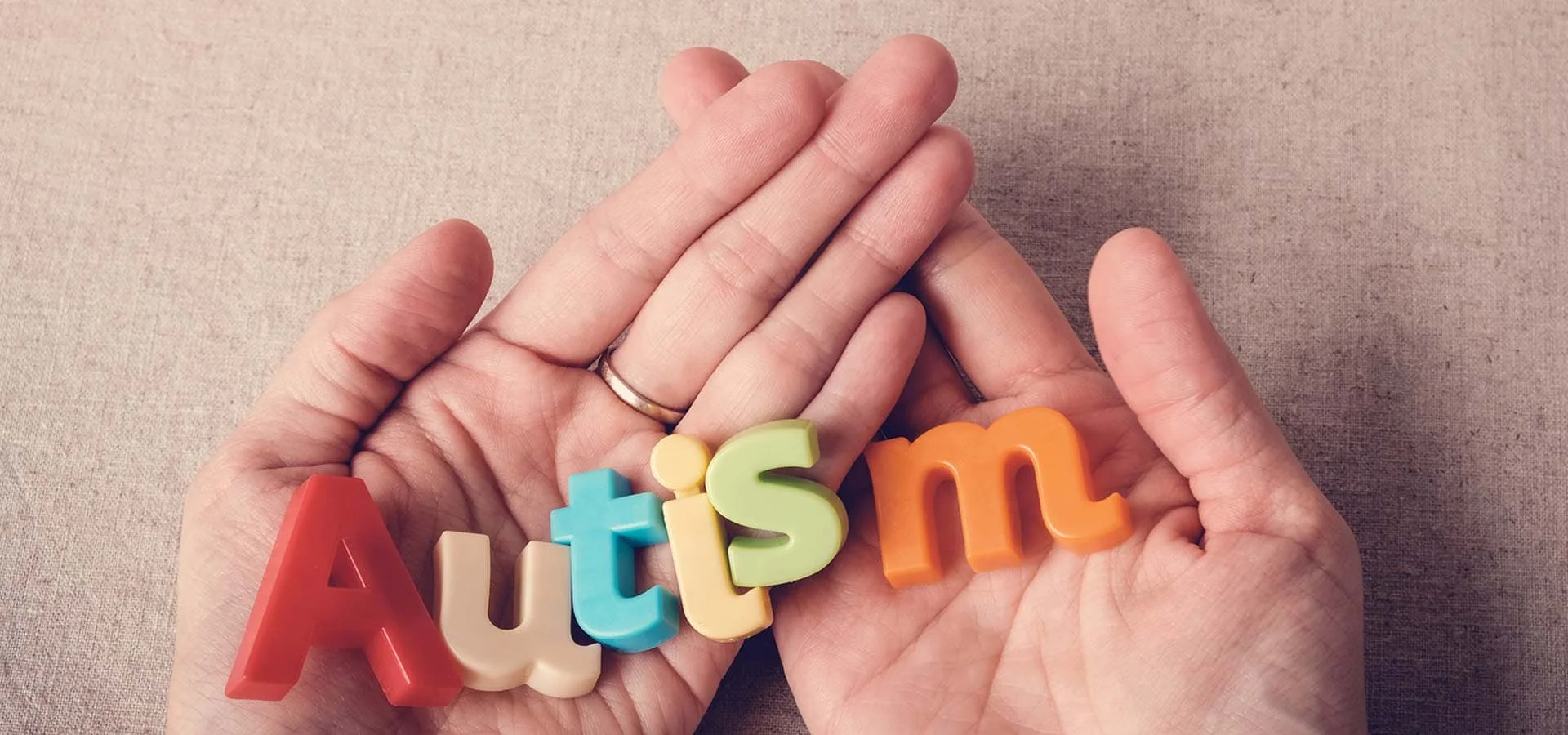Key Takeaways
- ADHD and Autism Spectrum Disorder (ASD) are distinct neurodevelopmental disorders with unique characteristics, but they both share overlapping symptoms such as social challenges and difficulties with executive functioning.
- Diagnosing ADHD and ASD can be complex due to overlapping symptoms, with ASD often detected earlier in childhood and ADHD diagnosed when inattention becomes prominent in school settings. Almost half of autistic children also display symptoms of ADHD.
- Treatment for ADHD includes medication and behavioral therapies aimed at managing symptoms, while interventions for Autism focus on social skills and behavioral adjustments, as there are no medications that target the core symptoms of Autism.
What sets ADHD apart from Autism, and how can one tell the difference? At the core, ADHD is often tied to attention difficulty and impulsivity, while Autism is mainly associated with social interaction challenges and fixed interests. This article cuts through confusion to highlight the distinct symptoms, diagnostic criteria, and treatment approaches for ADHD vs Autism, providing a fundamental comparison for those seeking clarity.
Defining ADHD and Autism Spectrum Disorder
ADHD and ASD, while often spoken of together, are distinct neurodevelopmental disorders, each with its own specific symptoms and diagnostic criteria. Their commonality lies in their classification as neurodevelopmental conditions, but the similarities often end there. Or do they?
While ADHD and Autism have their unique characteristics, they also share some overlapping symptoms, such as social challenges and difficulties in daily life function. However, the root causes of these disorders are a mix of genetic and environmental risk factors, creating a complex interplay of influences that makes every individual’s experience unique.
Attention Deficit Hyperactivity Disorder (ADHD)
First, we’ll examine ADHD. This disorder manifests as a struggle with focusing, impulsivity, and hyperactivity, with three primary presentations: inattentive, hyperactive-impulsive, and combined. ADHD affects a significant portion of the population, with around 8.4% of children and 2.5% of adults diagnosed with the condition, often experiencing various ADHD symptoms, including challenges with impulse control.
Individuals with ADHD often face challenges in staying organized and maintaining focus, which can significantly impact their school or work performance and their social interactions. However, an understanding and supportive environment, coupled with strategies like breaking tasks into smaller steps, using time management reducing distractions, and using positive reinforcement, can greatly help individuals with ADHD to thrive.
Autism Spectrum Disorder (ASD)
Next, we delve into autism spectrum disorders, with a focus on Autism Spectrum Disorder (ASD). This neurodevelopmental disorder affects the brain development and how individuals communicate and interact with others, often involving repetitive behaviors and interests. ASD is quite common, affecting about 1 in 59 children in the United States. Its causes are a combination of genetic Autism Spectrum Disorder (ASD) factors and prenatal environmental influences, increasing the likelihood of its development.
Social settings often highlight the symptoms of Autism Spectrum Disorder (ASD), as individuals might struggle with eye contact, back-and-forth conversations, and specific interests. These challenges can significantly affect social, school, or work situations, bringing unique hurdles for those with ASD.
Unraveling Similarities Between ADHD and Autism
Despite being distinct conditions and developmental disorders, ADHD and Autism do share certain characteristics. Both conditions can impact executive functioning and attention, affecting organization, planning, and focus. They also present social challenges, albeit from different perspectives. For instance, those with Autism might struggle with imitation speech or body language, while those with ADHD might grapple with impulsivity and fitting into group norms.
Sensory processing also presents challenges for both conditions, although they manifest uniquely for each disorder.
Social Challenges
Individuals with ADHD often encounter difficulties in social interactions, dealing with rejection, and managing relationship issues. Similarly, individuals with Autism also grapple with socializing and connecting with others, which can significantly impact their ability to form relationships.
However, the reasons behind these social challenges are unique to each condition, affecting how individuals with ADHD or Autism interact socially. For instance, individuals with ADHD might struggle with impulsivity, dominating conversations, or fitting into group norms, while those with Autism might grapple with understanding social cues and non-verbal communication.
Executive Functioning
ADHD can hinder executive functioning skills, posing challenges for individuals to analyze, plan, organize, and switch between tasks. These challenges can lead to issues with attention and planning, trouble formulating and executing strategies, and difficulties using feedback for tasks.
Autism, too, can affect executive functioning, leading to problems with planning, organization, and task sequencing. These challenges can make it difficult for individuals with Autism to handle tasks that require a structured approach and careful planning.
Sensory Processing
Both ADHD and Autism commonly manifest sensory processing difficulties. For instance, children with ADHD might find unexpected touch or movement bothersome, feel sensitive to textures like t-shirt tags, and may not like loud noises.
On the other hand, individuals with Autism might be sensitive to sights and sounds, move more than usual, and engage in more stimming. These patterns might include being overly responsive, under-responsive, or seeking sensory input. While both conditions present sensory processing difficulties, the specifics can differ, contributing to the complexity of understanding and managing these disorders.
Distinguishing Key Differences Between ADHD and Autism
Despite some similarities, Both ADHD and Autism are separate conditions with significant distinctions. Both conditions can present different challenges and require specific approaches for support and management. These differences manifest in areas like communication and social cues, routines and structure, and interests and passions. For instance, while individuals with ADHD might struggle with impulsivity and maintaining focus in social situations, those with Autism often grapple with understanding social cues and non-verbal communication.
Moreover, while individuals with ADHD may benefit from consistent routines, structure, and clear expectations to manage their symptoms, those with Autism often prefer predictability and sameness in their routines and structure. Even the nature of their interests and passions can differ. While individuals with ADHD tend to have a broad range of interests and can be highly creative and enthusiastic, those with Autism often have focused and intense interests.
Communication and Social Cues
Individuals with Autism often find it challenging to communicate and understand social cues. This difficulty can manifest as challenges in interpreting non-verbal communication and understanding social cues that come naturally to others. On the other hand, individuals with ADHD might face communication difficulties as well, but these are often due to impulsivity and distractibility rather than difficulties in using nonverbal communication and understanding social cues.
Furthermore, individuals with ADHD tend to be more socially motivated than those with Autism. This means that individuals with ADHD are often more eager to socialize, while those with Autism might not be as interested in social interactions.
Routines and Structure
Individuals with Autism and ADHD have distinct needs when it comes to routines and structure. While people with ADHD tend to do better with consistent routines, structure, and clear expectations, those with Autism have a preference for predictability and sameness in their routines and structure. This preference often stems from their need for a sense of security and predictability.
Interests and Passions
Both individuals with Autism and ADHD can have specialized interests. However, the intensity and focus of these interests can differ between the two conditions. For instance both autism, individuals with ADHD often have a ton of creativity and enthusiasm for their interests and can really focus on them, even turning them into obsessions.
On the other hand, people with Autism might have interests like collecting specific items, getting really into music, or being super focused on a narrow topic. This intense focus can affect their social interactions and daily lives. High-functioning individuals with Autism usually have more intense and deeply rooted interests compared to the broader range of passions in ADHD.
Diagnosing ADHD and Autism
The process of diagnosing ADHD and Autism can be intricate due to their overlapping symptoms and potential co-occurrence. One key difference in diagnosis is the age at which they are typically diagnosed. Autism is usually spotted earlier in childhood, while ADHD often gets diagnosed when kids start school and inattention becomes more obvious.
To diagnose Autism and ADHD, comprehensive evaluations are conducted, which include observations, interviews, and assessments of development and behavior. This thorough evaluation process helps in understanding an individual’s behavior, social skills, and everyday abilities.
Diagnostic Criteria
Behavioral observations and assessments dictate the diagnostic criteria for Autism and ADHD. For ADHD, the focus is on inattention and hyperactivity, while Autism diagnosis centers around social communication and repetitive behaviors.
These diagnostic criteria help in distinguishing between the two conditions, aiding in a more accurate diagnosis.
Challenges in Diagnosis
The overlapping symptoms and possible co-occurrence make diagnosing Autism and ADHD challenging. It is common for the same disorder or people to be diagnosed with both conditions, as almost half of the children with Autism also have ADHD. This makes the diagnosis process complex and requires a thorough and comprehensive evaluation to ensure an accurate diagnosis.
Co-Occurrence and Comorbidity
ADHD and Autism co-occurring is a common phenomenon, as seen in many cases of autism and ADHD. Many individuals experience symptoms of both conditions, which implies that there may be some shared or overlapping underlying causes of mood disorders. Almost half of autistic children also have ADHD, making the diagnosis process complex due to the overlapping symptoms.
Individuals with both Autism and ADHD require personalized support, such as occupational therapy, social skills training, and medication management. It is crucial to understand the unique challenges faced by these individuals to provide the appropriate support and to help them thrive.
Treatment Approaches for ADHD and Autism
The approaches to treat Autism and ADHD differ considerably. While ADHD treatments typically involve medication and therapy to manage symptoms and improve daily functioning, Autism treatments focus on addressing core symptoms through behavioral and social interventions, as there are no medications specifically targeting core Autism symptoms.
ADHD Treatments
In treating ADHD, the following approaches are generally used:
- Medications such as stimulants and non-stimulants to mitigate impulsivity and enhance focus
- Cognitive-behavioral therapy to manage symptoms and improve daily functioning
- Mindfulness-based cognitive therapy to improve attention and reduce stress
- Psychotherapy to address emotional and behavioral challenges
These approaches are often used in combination to provide comprehensive treatment for individuals with ADHD.
Autism Treatments
Contrary to ADHD, Autism treatment centers around behavioral and social interventions. The main goal of treatment is to help individuals with Autism understand social differences and adjust their behavior to better fit into society. Some interventions that play a crucial role in treating Autism include:
- Applied Behavior Analysis (ABA), a form of behavior therapy
- Speech therapy
- Occupational therapy
- Social skills training
- Cognitive behavioral therapy (CBT)
- Medication (in some cases)
ABA promotes good behaviors while minimizing unwanted ones through positive reinforcement and helps children adjust to social situations that might be challenging for them.
Navigating Life with ADHD and/or Autism
Navigating life with ADHD and/or Autism presents distinct challenges and strengths. In educational settings, individuals with Autism and ADHD might need special supports and accommodations to help them excel in their learning environment. In addition, there is a strong link between ADHD and substance abuse disorders, with a significant portion of adults in treatment for alcohol and substance abuse actually having ADHD. Some key points to consider are:
- Individuals with Autism and ADHD may require additional support and accommodations in educational settings.
- There is a strong link between ADHD and substance abuse disorders.
- Many adults in treatment for alcohol and substance abuse also have ADHD.
On the other hand, individuals with Autism, especially those with average to high IQs, are more likely to develop addictions like alcohol or drug abuse.
Summary
In our journey exploring the complex landscapes of Autism and ADHD, we’ve discovered their unique characteristics, their overlapping terrain, and the distinct ways they manifest in individuals. Understanding these conditions is like assembling a puzzle, where each piece represents a symptom, a behavior, or a characteristic. It’s through this understanding that we can better support those living with ADHD and/or Autism, empowering them to navigate their journey with resilience and self-advocacy.
Frequently Asked Questions
Meet the Author

Bradley Keys
Bradley Keys is an accomplished writer who has covered a wide variety of health, nutrition, and wellness topics. He graduated with a Bachelor of Science from Florida State University, and has extensively explored a diverse range of subjects within the realms of health, wellness, and nutritional supplementation, showcasing a broad and in-depth understanding of these interconnected fields.









